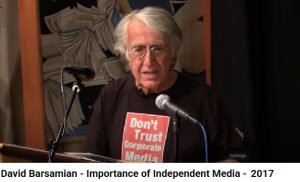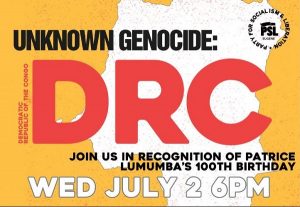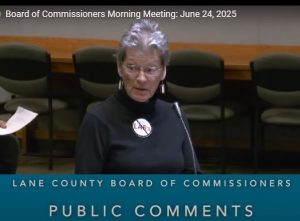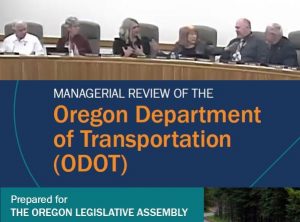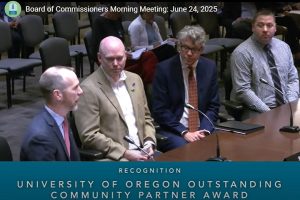Neighborhood preparedness teams build community
10 min read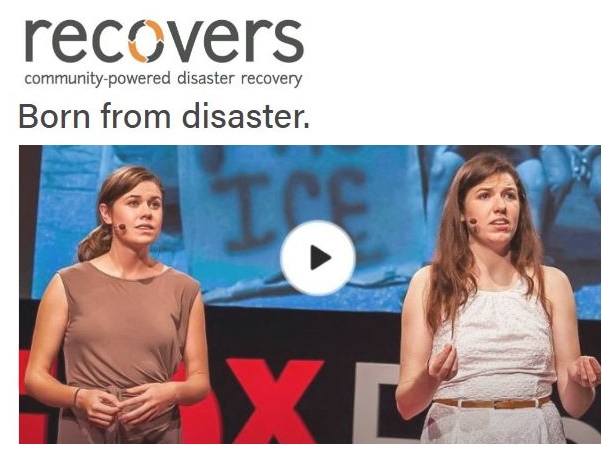
It’s all about neighbors helping neighbors, and neighborhoods helping neighborhoods. Speaking at the Jefferson Westside general meeting on Feb. 13:
David Monk (Ready Southeast): I don’t think you have a preparedness committee at this point.
Ted Coopman (JWN chair): We’re working on it.
David Monk (Ready Southeast): Yeah. As you know, I’m from Southeast (Neighbors). So what I thought I would do is describe for you some aspects of our program in Southeast, and hopefully inspire you all to see some of the things that we’ve been able to do with very little funding.
[00:00:28] Whiteaker (Community Council) hosted a preparedness fair, let’s see, probably back in October. They invited Sierra (Anderson), who is the city’s new emergency management staff member; they had vendors selling go bags and water treatment, water storage.
[00:00:44] Friendly (Neighbors) did something similar five years ago, and that was really the beginning of their program.
[00:00:49] I think we’ve been going longer than anyone else. We’re a large neighborhood, 6,000 plus households. So for us, we got started, let’s see, I think it was maybe 2015. There were six volunteers who got together to start this program. And basically, they, to their good credit, they realized, with the time and energy they had, that probably the most valuable thing they could do would be to write a disaster plan—a neighborhood-based disaster plan for Southeast.
[00:01:20] Don Metheny was the principal author of that, and these other volunteers helped with that. If you get a group going and you’d like to see the proposals, Don Metheny, who wrote the disaster plan, is a fabulous writer.
[00:01:33] And we have at this point the only neighborhood-based disaster plan. And so everything from a chemical spill in the neighborhood to a pandemic. Go figure! I mean, when the pandemic hit, we had a playbook on it. We knew exactly what we were going to do.
[00:01:49] And so the value of that—it was amazing how rapidly we activated that year. We adopted an incident command structure. I don’t know if you’ve heard of this. Most emergency management professionals use an incident command system.
[00:02:07] And we were kind of compelled to do that if we wanted to be taken seriously by the professional first responders. So it’s rather militaristic, if you will, for some of us. So we call ours ‘ICS for Hippies.’ That’s our way we try to operate.
[00:02:27] But we do have, we have an incident commander. And Larry Kirkpatrick is our communications lead. He does the communication training. I’m the operations chief, is my title. We have somebody in charge of logistics, planning, and public information. So you may have come across John Murray with Whole Community News. John is our public information officer.
[00:02:49] So in the pandemic, I don’t know if you’ve ever seen, there was a couple women whose community had been devastated by a couple tornadoes They started a website called Recovers, and basically it’s a means by which volunteers can hook up with people in need. But Recovers was a website that we signed up, we being Southeast (Neighbors), Friendly (Area Neighbors), Amazon (Neighbors).
[00:03:12] Santa Clarian: Santa Clara (Community Organization) signed up too.
[00:03:14] David Monk (Ready Southeast): Santa Clara did. Thank you. And so, myself personally, I shopped for a neighbor of mine. She’s probably in her late 70s. She walks with a cane. She’s got some medical conditions. She and I become friends, and I believe that’s happened with a bunch of other folks who created relationships and met through that Recovers site.
The disaster plan, we’re updating it now. This is a, I don’t know, a 50-60-page document. When we’re talking about a disaster, by definition, the first responders are unavailable to us. We have a major earthquake in this community, we’re told in Southeast, we will wait weeks—if not longer—for the fire, police.
[00:03:56] John Q: FEMA recommends that the whole community be involved in planning for disasters. The city encourages nearby neighbors to meet and help one another.
[00:04:06] David Monk (Ready Southeast): So when I came, there was really three of us to try and get this program off the ground. And it was really hard to engage people. The best volunteers are those who are already volunteering too much, is how it generally happens. So, it was really difficult for that first little bit.
[00:04:25] But we had that winter, so this is probably a month after the ice storm, we had the biggest turnout we’d ever had in the history of Southeast. We had, maybe over 200 people came. And the kind of takeaway from me on that was, you know, as you’ve heard before: Don’t let a good crisis go to waste. Take advantage. So we’ve doubled down every time we have any kind of severe weather or some new information comes out about the subduction zone earthquake.
[00:04:53] And from that 27 people signed up to organize the nearby neighbors. And basically training them on the best way to approach neighbors, to engage them in participating in a mutual support team that you’re creating with your neighbors, and ideally you are creating community with them. It’s not only in times of emergency that you are helping each other. It’s, you’ve got phone tree, you need help,
[00:05:21] I called my neighbor, who’s part of my group when I need him to uphold the other end of the board, and he’s retired and glad to help.
[00:05:27] So it really is about creating community. And I think if you trust those neighbors as part of your group, it means a lot. It could save your life, save your family’s life.
[00:05:39] So it went from that first meeting—we’re at 75 volunteers now. It took us that six, seven, eight years to get there and we do it like you all do: through the newsletter, through our email list, neighborhood events. People sign an interest list. We kind of inquire what they’re wanting to get involved in, and then we invite them to the trainings.
[00:06:03] John Q: The nearby neighbors also practice communicating using hand-held radios.
[00:06:08] David Monk (Ready Southeast): We’re assuming in an earthquake scenario, we will lose cell phone and landline communication. We’re not going to have any communication.
[00:06:16] When people came to the training, they were agreeing to organize their nearby neighbors. So when they completed the training, we loaned ’em, if you will, a radio—a little half-watt radio, doesn’t go very far in your neighborhood. You could probably maybe talk across the neighborhood.
[00:06:36] Friendly (Area Neighbors) did something different. The GRMS is one and a half watts. They do require a license. Very easy to get, I really wish we had gone that route. They’re virtually the same specs. It’s just that license that you need from the Federal Communications Commission.
[00:06:52] So what we did, and I recommend, I think, yeah, Friendly (Neighbors) did the same thing, is to break the neighborhood down to ideally equal population areas and have some individual be in charge of that area with primary coordinators overseeing the folks who have organized the nearby neighbors. It’s multi-tier, like a communications network.
[00:07:14] And you can see you don’t want to have too large a group of neighbors. We’re pretty accepting if people just want to organize five neighbors. We suggest they organize 20 households around them. But oftentimes it’s considerably less than that. Ideally, it’s line-of-sight. It’s the neighbors that live each way from you because you want to be able to walk out on your sidewalk and see your neighbor’s houses.
[00:07:39] John Q: The nearby neighbors use a sign that says OK or Help.
[00:07:43] David Monk (Ready Southeast): We do exercises where either the OK (sign), or the HELP (sign) in their window. And so you can imagine how much time that saves those who are going around, that are near nearby part of the neighborhood, looking for those who need that.
[00:08:00] And if there’s an OK sign in their window, they know they don’t need to stop and knock on the door, right? They can just keep moving on. So that golden 60 minutes. It really is that first hour and people are injured and they’re alone. That’s when their lives can be saved.
[00:08:16] So that’s what we’re trying to encourage our volunteers to first and foremost, make sure their family is safe and sound, to go to a gathering site to look in on their nearby neighbors, especially their elders, and then come to our command center in the neighborhood and participate in larger neighborhood wide responses.
[00:08:42] Ted Coopman (JWN chair): We run Pledge to Prepare in the (Jefferson Westside) eNews every month. And so every month has a new Pledge to Prepare and there’s a place we can go ahead and sign up. So you can go ahead and look at that on the eNews.
[00:08:52] And then I want to talk about the Map Your Neighborhood, because we’ve looked at that before. How do you get around the reticence of people, kind of, the reticence of people sharing their capabilities as far as their houses, because I had some neighbors that were a little bit wiggy about that.
[00:09:14] David Monk (Ready Southeast): Oh, yeah, all the time. I was a building contractor. I know a bunch of contractors in town, and they’re like, ‘I’m not going to tell people about all the tools I have in my garage.’
[00:09:23] Some medical professionals are likewise reticent to share their skill sets, ’cause when you come together as a group of nearby neighbors, you’re sharing your skills and resources that you would bring to the table in a minute.
[00:09:35] So I think the way to deal with that is, you start with a small group of neighbors.
[00:09:40] So the idea is that group that shows up in a face-to-face meeting and shares that information, you let them know, unequivocally, this information has not been shared anywhere else.
[00:09:52] If some new neighbor comes in, we invite them to our Christmas party, summer picnic, everybody gets to meet them. And then the group decides, do I want to share? Each individual decides: Do I want to share what I’ve shared with this program?
[00:10:06] John Q: Their mantra is: Take care of yourself, take care of your family, take care of your neighbors. Speaking about individual preparedness:
[00:10:15] Sandra Bishop: A personal note about the water. We added a second water heater. The water heater is a great source of water in an emergency. So my husband is a contractor, there’s some myth about how you shouldn’t drink water out of the water heater. It’s not really true of the new water heaters, so. So now we have an extra water heater, full of water if and when we need it.
[00:10:41] David Monk (Ready Southeast): A 7.1 earthquake within the next 50 years is a one in three probability, which seems pretty damn high, doesn’t it? Chances are every one of your windows will break, you know?
[00:10:54] So what they talk about is having right, under your bed, some good gloves, shoes, maybe a hard hat, maybe a first aid kit. So if this happens at two in the morning, you’re able to grab that stuff, check on your family, and then go and help your neighbors.
[00:11:11] EWEB has said we could be without electricity for three to six months, without water six to 12 months, and many of us, if we can, we’ll leave. Because it would be probably the largest, most severe environmental disaster in the history of this country, right here in our neighborhood. So, it’s not something that people are taking lightly.
[00:11:33] If you haven’t done this already, Lane County has a text alert. So you go there, you put your address in, and sign up. I just signed up for all weather events. So before the ice storm came, I’m getting text alerts from them just saying ‘Severe weather is anticipated.’
[00:11:52] And what’s really valuable for us in the South Hills is wildfire. And that’s why we try to encourage everybody to sign in for this text alert, because ideally, it’s going to be telling us what level of evacuation we should be in, whether we should be getting ready or we should be walking out the door right now, for any scenario.
[00:12:11] John Q: More training is available from the Community Emergency Response Teams, the CERTs. And several neighborhoods collaborated on discussion exercises called tabletops.
[00:12:22] David Monk (Ready Southeast): Tabletops are a really good way to work on your response protocols for your group. So it can be online or it can be in a room all together around the table. And it’s amazing. My experience is even people who are well-versed in emergency preparedness can be faced with scenarios that they’ve not encountered before.
[00:12:44] John Q: Neighborhood organizations support one another in developing local leaders, supporting one another during disasters, and building community.
[00:12:51] David Monk (Ready Southeast): It is all about good volunteers working well together and creating a leadership process so that new members can come in, can participate in your organization, and those of us who’ve been there—myself 10 years now—can move on.
[00:13:09] John Q: For more, contact your local neighborhood association.
